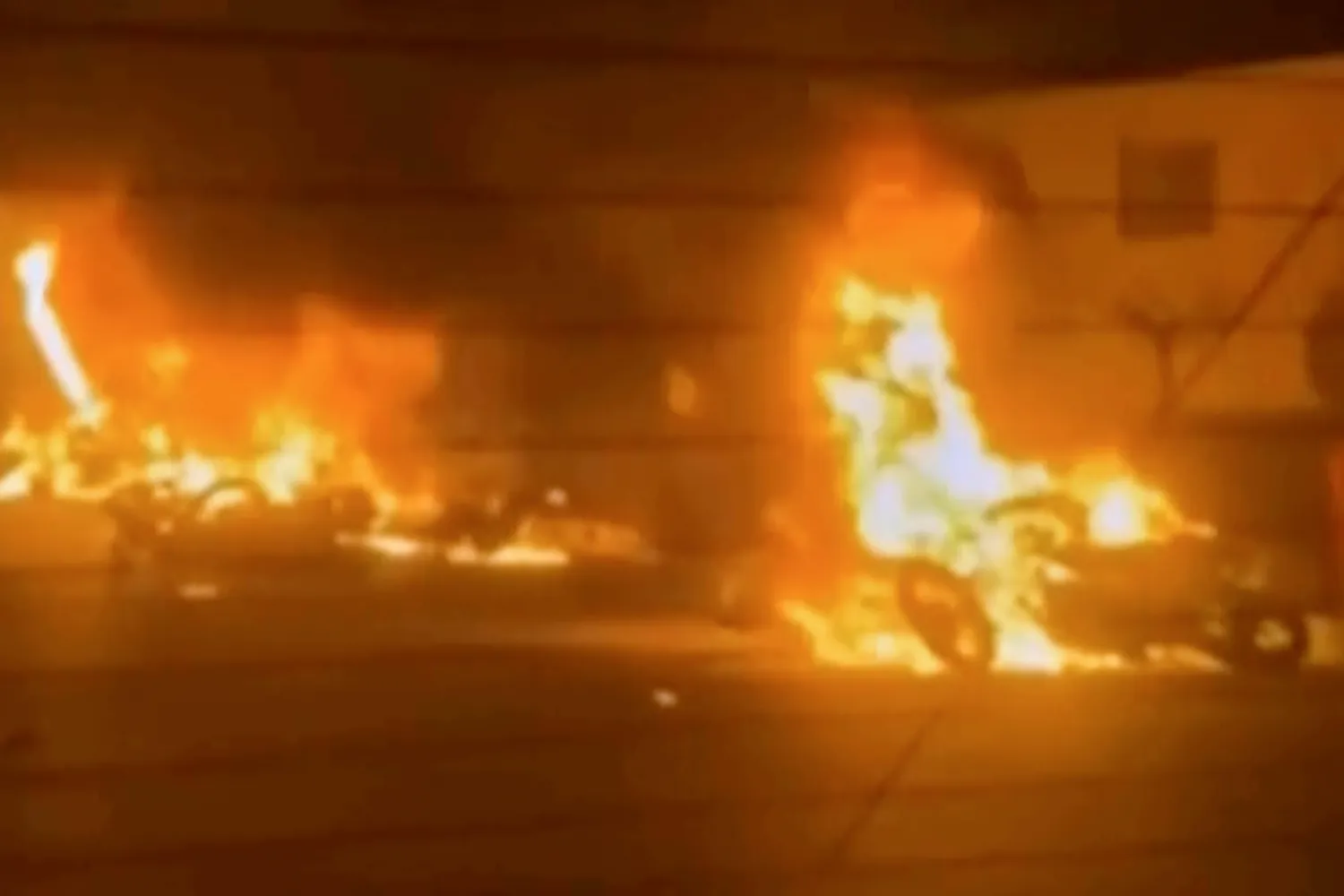Iran was largely cut off from the outside world on Friday after authorities blacked out the internet to curb growing unrest, as video showed buildings aflame in anti-government protests raging in cities across the country.
Rights groups have already documented dozens of deaths of protesters in nearly two weeks and, with Iranian state TV showing clashes and fires, the semi-official Tasnim news agency reported that several police officers had been killed overnight.
In a televised address, Supreme Leader Ali Khamenei vowed not to back down, accusing demonstrators of acting on behalf of émigré opposition groups and the United States, and a public prosecutor threatened death sentences.
DOZENS KILLED IN TWO WEEKS OF PROTEST
The protests pose the biggest internal challenge in at least three years to Iran's clerical rulers, who look more vulnerable than during past bouts of unrest amid a dire economic situation and after last year's war with Israel and the United States.
While the initial protests were focused on the economy, with the rial currency losing half its value against the dollar last year and inflation topping 40% in December, they have morphed to include slogans aimed directly at the authorities.
Iranian rights group HRANA said on Friday it had documented the deaths of at least 62 people including 14 security personnel and 48 protesters since demonstrations began on December 28.
The internet blackout has sharply reduced the amount of information flowing out of the country. Phone calls into Iran were not getting through. At least 17 flights between Dubai and Iran were cancelled, Dubai Airport's website showed.
Images published by state television overnight showed what it said were burning buses, cars and motorbikes as well as fires at underground railway stations and banks.
Videos verified by Reuters as having been taken in the capital Tehran showed hundreds of people marching. In one of the videos, a woman could be heard shouting "Death to Khamenei!"
Other chants included slogans in support of the monarchy.
Iranian rights group Hengaw reported that a protest march after Friday prayers in Zahedan, where the Baluch minority predominates, was met with gunfire that wounded several people.
Authorities have tried a dual approach - describing protests over the economy as legitimate while condemning what they call violent rioters and cracking down with security forces.
Last week President Masoud Pezeshkian urged authorities to take a "kind and responsible approach", and the government offered modest financial incentives to help counter worsening impoverishment as inflation has soared.
But with unrest spreading and clashes appearing more violent, the Supreme Leader, the ultimate authority in Iran, above the elected president and parliament, used much tougher language on Friday.
"The Islamic Republic came to power through the blood of hundreds of thousands of honorable people. It will not back down in the face of vandals," he said, accusing those involved in unrest of seeking to please US President Donald Trump.
Tehran's public prosecutor said those committing sabotage, burning public property or engaging in clashes with security forces would face the death penalty.
FRAGMENTED OPPOSITION
Iran's fragmented external opposition factions called for more protests, and demonstrators have chanted slogans including "Death to the dictator!" and praising the monarchy that was overthrown in 1979.
Reza Pahlavi, exiled son of the late shah, told Iranians in a social media post: "The eyes of the world are upon you. Take to the streets."
However, the extent of support inside Iran for the monarchy or for the MKO, the most vocal of émigré opposition groups, is disputed. A spokesperson for the MKO said units with the group had taken part in the protests.
"The sense of hopelessness in Iranian society is something today that we haven't seen before. I mean, that sense of anger has just deepened over the years and we are at record new levels in terms of how Iranian society is upset," said Alex Vatanka of the Middle East Institute in Washington.
Trump, who bombed Iran last summer and warned Tehran last week that the US could come to the protesters' aid, said on Friday he would not meet Pahlavi and was "not sure that it would be appropriate" to support him.
Despite the increased pressure, Iranian Foreign Minister Abbas Araqchi said on Friday the chance of foreign military intervention in Iran was "very low". He said the foreign minister of Oman, which has often interceded in negotiations between Iran and the West, would visit on Saturday.
UN rights chief Volker Turk said he was "deeply disturbed by reports of violence" and by communications shutdowns.
Iran has weathered repeated bouts of major nationwide unrest across the decades, including student protests in 1999, mass demonstrations over a disputed election outcome in 2009, demonstrations over economic hardships in 2019, and the Woman, Life, Freedom protests in 2022.
The 2022 protests, sparked by the killing of a young woman in the custody of Iran's religious morality police, drew a large variety of people onto the streets, with men and women, old and young, rich and poor.
They were ultimately suppressed, with hundreds of people reported killed and thousands imprisoned, but authorities also subsequently ceded some ground with women now routinely disobeying public dress codes.









